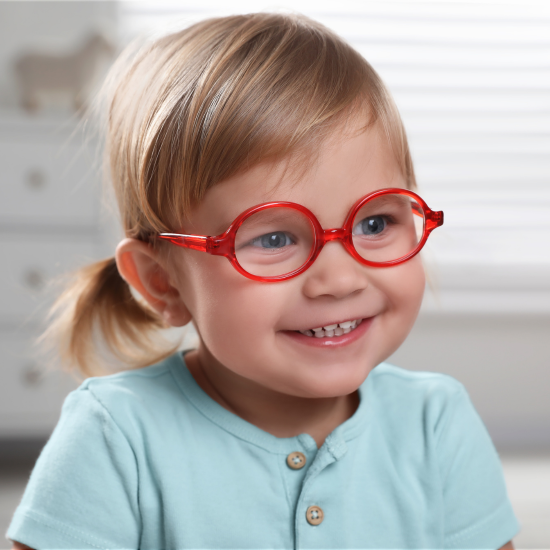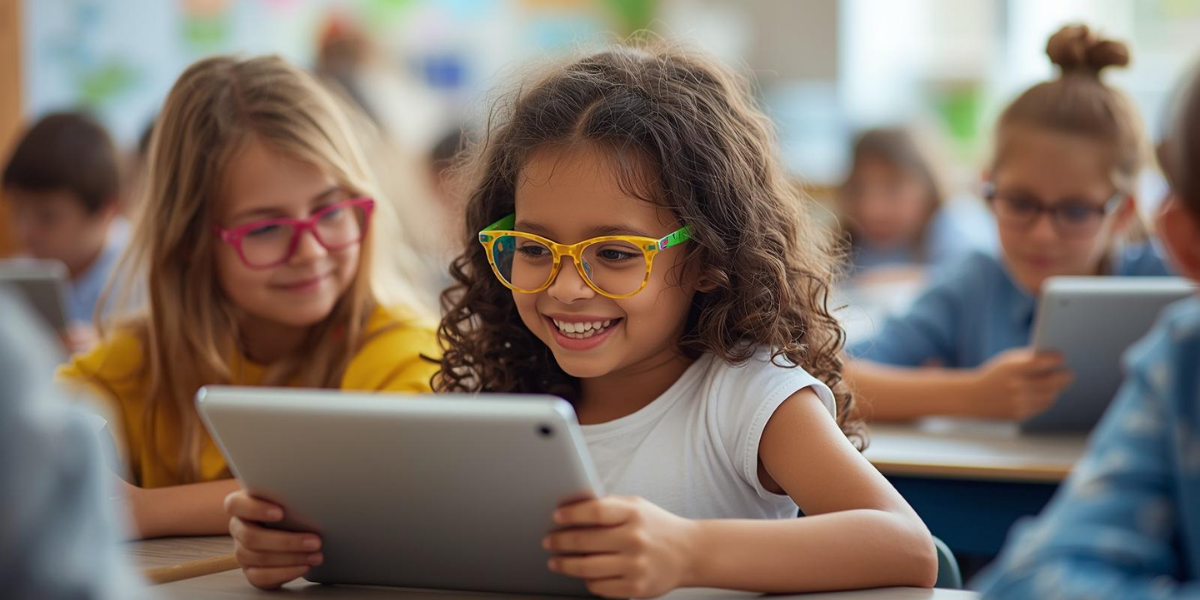Myopia (or short-sightedness) is becoming more common in children and teens. At Groovy Glasses, our optometrists offer tailored myopia management programs designed to slow its progression and help protect long-term eye health.
We take a personalised approach — every child’s eyes, lifestyle, and vision needs are different, and so is their management plan.
Our Myopia Management Options
-

Ortho-K (Orthokeratology)
Special contact lenses worn overnight to gently reshape the front surface of the eye.
They provide clear vision during the day without needing glasses or contact lenses.- Great for active children or teens
- Drug-free and non-surgical
-

MiSight® Contact Lenses
Soft daily contact lenses designed specifically to slow myopia progression.
- Comfortable and easy to use
- Suitable for children aged 8+
- Worn during the day, removed at night
-

MiyoSmart™ / Zeiss MyoCare Spectacle Lenses
Advanced spectacle lenses that provide clear vision while helping to control eye growth.
- Ideal for younger children
- Simple, safe, and effective option
-

Atropine Eye Drops
Low-dose atropine may be used to help slow myopia progression in some children.
- Often used in combination with other treatments
- Simple, non-invasive daily routine
-

Combination Therapy
For some children, combining treatments such as Ortho-K lenses with atropine drops can offer enhanced control of myopia progression.
- May provide extra benefit for certain prescriptions.
- Your optometrist will determine if this approach is appropriate
Learn more about myopia
What is myopia?
Myopia (also known as short‑sightedness or near‑sightedness) is an eye condition where distant objects (for example the board at school or the TV) appear blurred, while near vision (such as a book, iPad or iPhone) remains clear.
The usual cause is that the eyeball has become too long. As a child grows, the eye also grows. In some children, due to factors listed below, their eyes grow longer than normal — especially during the rapid changes of puberty. This is why myopia generally develops in childhood or the teen years.
At Groovy Glasses, we provide the best possible care in eye health by using leading‑edge technology.
What causes myopia?
In the last few decades, the rates of myopia have been increasing at a staggering rate. It is predicted that by the year 2050, half the world’s population will be short-sighted. Although the exact cause is unknown, many eye doctors believe the overuse of smartphones and computers could be a leading factor.
If an adult develops myopia, it is typically a mild condition that progresses slowly. However, if a child is diagnosed in the early vulnerable years of development, the condition can progress rapidly if untreated and cause long-term damaging effects of their adult eyesight.
Because myopia is a progressive condition which is associated with a higher risk of eye disease, it’s important to catch it as early as possible and start a prevention plan straight away.
A tailored approach to your child’s needs is critical. Your Groovy Glasses optometrist will discuss with you your child’s myopia profile, highlighting the relevant risk factors, and will talk through the treatment options available for your child.
Slowing down and treating myopia
World-recognised researchers have conducted extensive studies into how we can slow down or stop the progression of myopia. This is called Myopia Control.
Currently, orthokeratology (Ortho‑K) is one of the most effective methods for myopia control. More information is available here.
Environmental risks
Environmental risk factors are unlikely to affect the management pathway, however, they are modifiable and should be considered in view of the overall myopia risk profile.
Tips for modifying environmental risk:
- Spend time outside. Two hours of outdoor time each day has been researched to reduce risk. Walk the dog, ride a bike, play in the backyard, or sit outside in the shade. It’s the brightness of natural sunlight that’s beneficial, not UV light, but still make sure you use proper sun protection.
- Take regular breaks from close work.
Take a minute to look away and change your focus, or follow the 20/20/20 rule: every 20 minutes, look at something about 20 feet (around 6 metres) away for at least 20 seconds.
Is my child at risk of developing myopia?
A child with one myopic parent is three times more likely to develop myopia. If both parents are myopic, a child is six-times more likely. Children who have a genetic and/or environmental predisposition, and who also have a visual system which finds seeing up-close stressful (known as near-point-stress), have a high chance of developing myopia.
Previously, children were only prescribed glasses after becoming myopic. This reactive approach often resulted in rapid progression and higher prescriptions by the late teens.
With a new and greater understanding of what causes myopia, optometrists are now able to determine whether a child has a risk of becoming myopic, and intervene before a child notices any vision problems. This proactive approach to myopia is known as preventive medicine; it reduces the progression of myopia thereby reducing the eye health risks associated with higher levels of myopia.
If a child does become myopic, treatments are now focussed on addressing not just the distance blur, but also the up-close factors that cause progression, with the aim to slow down or stop myopia getting worse. This often involves addressing the near point stress with bifocal glasses or bifocal contact lenses.
Don’t wait until your child is struggling to see. Book an eye assessment at our practice.
Why Managing Myopia Matters?
Myopia isn’t just about needing glasses — higher levels of myopia can increase the risk of eye diseases later in life, such as glaucoma or retinal changes.
Early intervention allows us to slow down its progression, giving your child a better chance of maintaining healthy vision into adulthood.
At Groovy Glasses, we use clinically proven myopia management methods, based on the latest research and tailored to each child’s needs.
Goal of Myopia Management
The aim of myopia management is to slow the progression of nearsightedness, ideally reducing the rate of prescription increase by up to 50%. While it can’t reverse existing myopia, the focus is on controlling how quickly it develops over time.

Our Approach: Personalised for Every Child
Every child is unique, so our optometrists create a personalised plan considering:
- Age and prescription
- Eye health and growth pattern
- Daily activities and lifestyle
- Comfort and confidence with lenses or glasses
Early action makes all the difference. Book a comprehensive Myopia Management Assessment for your child today.

Myopia prevention is key
Don't let Myopia impact your daily life or hinder your visual clarity.
Visit Groovy Glasses today for expert optometric care and stylish eyewear solutions tailored to your needs.
Take the first step towards clearer vision and a brighter future. Schedule your appointment with us now!







